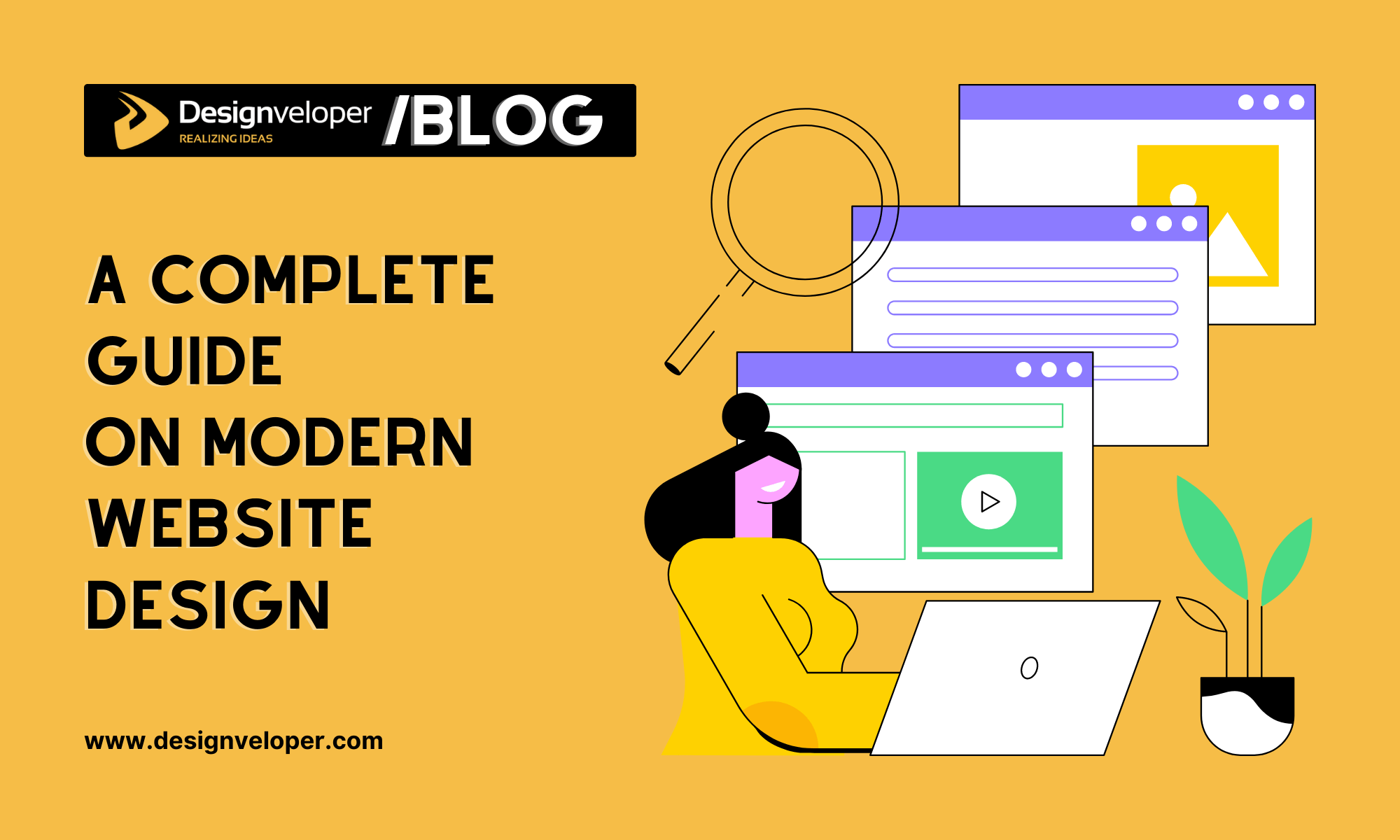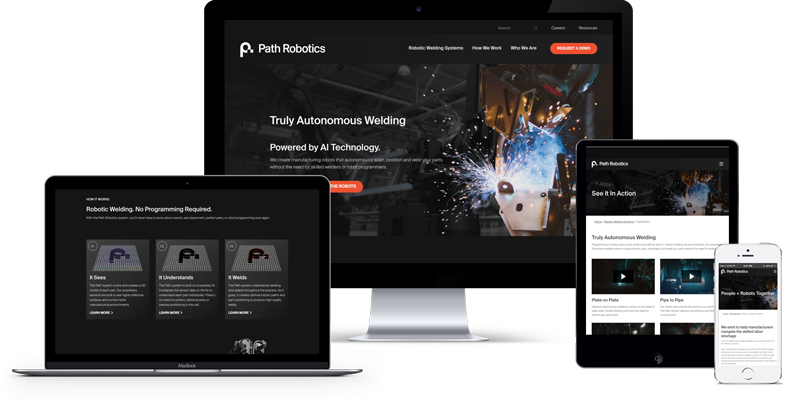Website Design Strategies to Ensure Your Site is Visually Appealing and User-Friendly
Website Design Strategies to Ensure Your Site is Visually Appealing and User-Friendly
Blog Article
Modern Site Style That Records Interest and Converts
In a significantly digital landscape, contemporary internet site design has arised as a pivotal element in catching customer attention and driving conversions. As we check out these important parts, it becomes clear that recognizing their interplay can significantly impact a web site's efficiency and user satisfaction.
Significance of Visual Power Structure
Aesthetic power structure is an important component in website style, as it guides customers' interest and improves their overall experience. By purposefully arranging content, designers can guide individuals to the most essential info initially, therefore raising involvement and enhancing use. Efficient aesthetic power structure employs numerous strategies, consisting of dimension, color, spacing, and comparison. Larger aspects normally attract the eye, while contrasting colors can emphasize vital messages, making them attract attention amongst more subdued parts.
Integrating a rational circulation in content plan is vital; for instance, putting one of the most crucial details on top of a web page fosters immediate recognition. Constant usage of typography, such as differing font dimensions and styles, helps develop a clear web content structure. This organization not just aids in navigation yet additionally builds count on, as customers really feel much more comfy when they can conveniently find what they are trying to find.
Inevitably, a well-executed aesthetic hierarchy not only boosts visual allure but also substantially impacts customer habits. By focusing on necessary components and ensuring a seamless experience, developers can properly transform site visitors into consumers, enhancing the significance of this foundational layout principle in contemporary site advancement.
Responsive Layout for All Instruments
Creating a seamless experience throughout different devices is vital in today's electronic landscape, where individuals access websites from tablets, desktop computers, and smart devices alike. Responsive style is an essential technique that ensures internet sites adapt fluidly to various display alignments, sizes, and resolutions. By employing flexible grids, images, and CSS media queries, designers can create designs that keep visual integrity and capability, regardless of the tool being made use of.
The value of responsive layout prolongs beyond looks; it straight affects customer involvement and conversion prices. A web site that functions well on all devices encourages longer gos to and minimizes bounce prices, as individuals are more probable to connect with content that is easy to browse. Search engines, especially Google, prioritize mobile-friendly websites in their positions, making receptive design a crucial part of search engine optimization (SEO)
Including responsive layout not just enhances user experience however also improves the growth procedure. By creating a solitary website that works across devices, companies can save time and resources contrasted to creating separate mobile and desktop versions. Ultimately, responsive style is a basic method for modern-day site design, ensuring access and satisfaction for all individuals, regardless of their gadget.
Engaging Interactive Aspects
While a receptive style prepares for a useful internet site, incorporating interesting interactive aspects is vital for catching customer attention and cultivating much deeper links. Website Design. Interactive components, such as computer animations, tests, and clickable infographics, develop an extra dynamic user experience, motivating visitors to invest even more time on the website
Including interactive attributes can additionally guide individuals with complex information, making it easier to absorb material. Interactive sliders can illustrate product variants, while ingrained video clips can give demonstrations or testimonials that reverberate more than fixed pictures or message. Gamification strategies, like incentives for finishing jobs or involving with content, can boost user motivation and retention.
Effective use of interactive elements not only enhances the customer experience however can likewise lead to higher conversion prices. It is crucial to balance interactivity with efficiency; extremely complex features might impede site rate, negatively affecting individual complete satisfaction.
Streamlined Navigation Practices
Effective navigation is a cornerstone of any type of successful site, as it straight affects customer experience and material accessibility. Streamlined navigating methods guarantee that customers can quickly situate information, enhancing their communication with the website. A well-structured navigating menu must be straightforward and intuitive, typically including a minimal number of main groups to avoid frustrating site visitors.
To attain streamlined navigating, developers must prioritize an ordered framework that practically arranges content. Applying breadcrumb routes can offer users with context concerning their existing location within the site, enabling seamless backtracking. Additionally, utilizing drop-down menus can successfully save room while still providing accessibility to subcategories.
Responsive design is essential, as navigation ought to be practical across all tools (Website Design). Mobile users, particularly, gain from touch-friendly food selections and collapsible sections that preserve use without compromising visual appeals

Reliable Call-to-Action Methods
A well-crafted call-to-action (CTA) is essential for leading individuals toward wanted outcomes on a web site, as it urges them to involve with web content or buy. To maximize their efficiency, CTAs my latest blog post ought to be clear, compelling, and strategically positioned throughout the site.
First, use action-oriented language that communicates seriousness or value, such as "Get Started," "Sign up with Currently," or "Insurance claim Your Discount." This language not just inspires customers but additionally sets clear assumptions regarding the following actions.
Second, think about style aspects; CTAs must stick out aesthetically through contrasting shades, adequate whitespace, and popular positioning. A switch that is simple to see and click rises the likelihood of user communication.
Additionally, personalizing CTAs based upon user habits or demographics can considerably enhance engagement. Customized messages resonate extra with individuals, driving higher conversion rates.

Verdict
In final thought, contemporary website style highlights the combination of aesthetic hierarchy, responsive layouts, engaging interactive aspects, structured navigating, and efficient call-to-action techniques. These elements collectively improve user experience, making sure that visitors remain involved and motivated to explore content even more. By prioritizing these style concepts, companies can considerably improve user retention and conversion prices, inevitably bring about higher success in the electronic landscape. The constant evolution of web design highlights its vital duty in effective online communication and advertising and marketing.
In a read this significantly digital landscape, modern-day website design has actually emerged as a crucial element in recording individual attention and driving conversions.Visual pecking order is a critical aspect in site style, as it overviews customers' focus and improves their overall experience.The value of responsive design expands beyond aesthetics; it directly impacts user involvement and conversion prices.Integrating receptive style not just boosts individual experience however also improves the growth process. Eventually, receptive style is a fundamental technique for modern website style, ensuring access and fulfillment for all users, regardless of their device.
Report this page